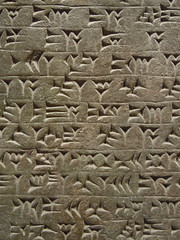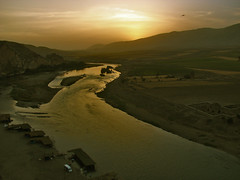AP World History Period 1 Flashcards
From Hunting and Gathering to Civilizations, 2.5 million-1000 B.C.E.: Origins
Original from MrsBHatchTEACHER
Terms : Hide Images [1]
| 11691002376 | hunting and gathering | Means of obtaining subsistence (staying alive) by humans before the mastery of sedentary (staying in one spot) agriculture; normally a tribal social organization |  | 0 |
| 11691002377 | civilization | Societies with reliance on sedentary (in one place) agriculture, ability to produce food surpluses (extra food!), and existence of non-farming elites, along with merchant (sales) and groups that manufacturing (make stuff) |  | 1 |
| 11691002378 | neolithic | The New Stone Age between 8000 and 5000 B.C.E.; period in which agriculture was invented; domestication (control by humans) of plants and animals accomplished |  | 2 |
| 11691002379 | nomadic societies | Groups of people who continually move from one location to another in order for their animals to graze and to find additional sources of food |  | 3 |
| 11691002380 | culture | Combination of ideas, art, "norms", and patterns of behavior that result from human social interaction |  | 4 |
| 11691002381 | agrarian revolution | Occurred between 8000 and 5000 B.C.E.; transition from hunting and gathering to sedentary (settled) farming |  | 5 |
| 11691002382 | pastoralism | A nomadic agricultural lifestyle based on herding domesticated animals; often created independent tribes capable of challenging sedentary agricultural societies |  | 6 |
| 11691002383 | Catal Huyuk | Early urban culture/civiization based on sedentary agriculture; located in modern southern Turkey; larger in population than Jericho, had greater degree of social stratification (hierarchy) |  | 7 |
| 11691002384 | Bronze Age | From 4000 to 3000 B.C.E.; increased use of plow, metalworking; development of wheeled vehicles, writing develops |  | 8 |
| 11691002385 | Mesopotamia | Literally "between the rivers"; the civilization that arose in the alluvial plain of the Tigris-Euphrates river valleys |  | 9 |
| 11691002386 | potter's wheel | A technological advance in pottery making; invented circa 6000 B.C.E.; improves food/material storage and transport |  | 10 |
| 11691002387 | Sumerians | People who migrated into Mesopotamia circa 4000 B.C.E.; created the first civilization within the region; organized area into city-states |  | 11 |
| 11691002388 | cuneiform | A form of writing developed by the Sumerians using a wedge-shaped stylus and clay tablets |  | 12 |
| 11691002389 | city-state | A form of political organization typical of Mesopotamian civilization; consisted of a city that controlled surrounding farmland |  | 13 |
| 11691002390 | ziggurat | a massive building usually associated with Mesopotamian temples |  | 14 |
| 11691002391 | Babylonian Empire | Unified all of Mesopotamia circa 1800 B.C.E.; collapsed due to foreign invasion circa 1600 B.C.E. |  | 15 |
| 11691002392 | Hammurabi | The most important Babylonian ruler; responsible for codification (making it official) of the law |  | 16 |
| 11691002393 | Pharaoh | The term used to denote the kings of ancient Egypt; |  | 17 |
| 11691002394 | pyramids | Monumental architecture typical of Old Kingdom Egypt; used as burial sites for pharaohs |  | 18 |
| 11691002395 | hieroglyphs | Form of writing developed in ancient Egypt; more pictorial than Mesopotamian cuneiform |  | 19 |
| 11691002396 | Kush | African state that developed along the upper reaches of the Nile circa 1000 B.C.E.; conquered Egypt and ruled it for several centuries |  | 20 |
| 11691002397 | monotheism | The exclusive worship of one god; introduced by Jews into Middle Eastern civilization |  | 21 |
| 11691002398 | Phoenicians | Seafaring civilization located on the shores of the eastern Mediterranean; established colonies throughout the Mediterranean |  | 22 |
| 11691002399 | Harappa and Mohenjo Daro | Major urban complexes of Harappan civilization; laid out on planned grid pattern |  | 23 |
| 11691002400 | Aryans | Indo-European nomadic, warlike, pastorialists who replaced Harappan civilization |  | 24 |
| 11691002401 | Huanghe (Yellow) River Basin | Site of the development of sedentary (settled) agriculture in China |  | 25 |
| 11691002402 | Shang | 1st Chinese dynasty (after the legendary Xia) |  | 26 |
| 11691002403 | Oracles | Shamans or priests in Chinese society who foretold the future through interpreting animal bones cracked by heat; inscriptions on bones led to Chinese writing |  | 27 |
| 11691002404 | ideographic writing | Pictograph characters grouped together to create new concepts; typical of Chinese writing | 28 | |
| 11691002405 | Big Geography | A term that draws attention to the global nature of world history. |  | 29 |
| 11691002406 | Paleolithic | The period that ended about 3,000 years after the end of the last Ice Age, it lasted until about 10,000 years ago. (Old Stone Age) The period of the Stone Age associated with the evolution of humans. It predates (before) the Neolithic period. |  | 30 |
| 11691002407 | Human migration during Paleolithic era | movement of humans from Africa to Eurasia, Australia, and the Americas | 31 | |
| 11691002408 | egalitarian | equality among people (no social levels) | 32 | |
| 11691002409 | Neolithic Revolution | period of change from hunter-gatherer lifestyle to agricultural lifestyles associated with domestication of animals, farming, and settlement |  | 33 |
| 11691002410 | patriarchy | father based/male dominated society (controlled by men) |  | 34 |
| 11691002411 | climatic change | Permanent agricultural villages emerged first in the lands of the eastern Mediterranean, possibly as a response to what? | 35 | |
| 11691002412 | weapons | Pastoralists were often the developers and disseminators of of ____ and forms of transportation that transformed warfare in agrarian civilizations | 36 | |
| 11691002413 | horses | major mode of transportation used and developed by pastoralists | 37 | |
| 11691002414 | art | This cultural phenomenon was usually promoted (encouraged) by the wealthiest and most powerful members of society (kings, priests, etc.) | 38 | |
| 11691002415 | record-keeping systems | these political and economic strategies arose independently in all early civilization and subsequently diffused through trade and migration | 39 | |
| 11691002416 | Nile River | This river flooded regularly which became extremely important for agriculture in the early Egyptian civilizations. |  | 40 |
| 11691002417 | Tigris River | This river's floods were unpredictable and impacted the development of the Mesopotamian civilization. |  | 41 |
| 11691002418 | Mesopotamian | Unpredictable weather patterns affected the development of the _____ civilization. | 42 | |
| 11691002419 | Nubia and Kush | Kingdoms upriver from Egypt. | 43 | |
| 11691002422 | Standard of Ur |  | 44 | |
| 11691002423 | Harappan King or Priest Figure |  | 45 | |
| 11691002420 | Jericho | One of the earliest cities: located in modern Israel. |  | 46 |
| 11691002421 | Catal-Hyouk | One of the earliest cities: located in modern Turkey. | 47 |
